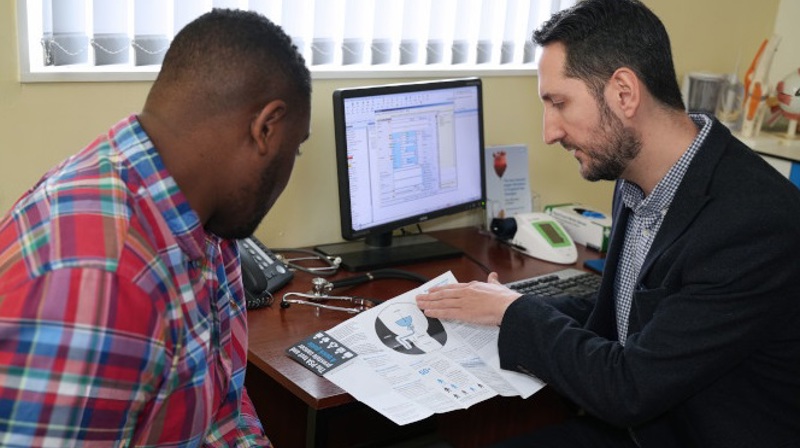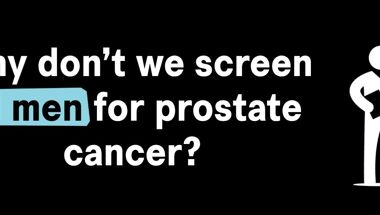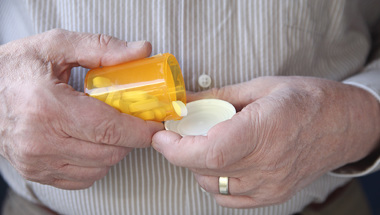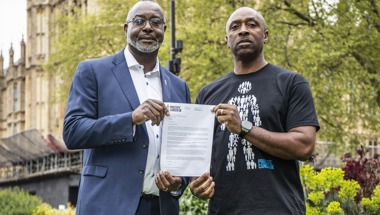Campaigns
19 Aug 2025Review of monitoring guidelines to be brought forward following our campaign for change
Men whose prostate cancer is growing slowly can be safely monitored for years without the need for treatment. But current guidelines for clinicians are out of date – and it means thousands of men are having treatment they don’t need. That could finally be about to change after our latest campaign triggered urgent action.

Health bosses have taken action to speed up a review of outdated guidelines on prostate cancer monitoring – only hours after we launched a campaign calling for immediate changes to the guidance.
Currently, about 6,500 men a year choose to have their cancer safely monitored without treatment – known as active surveillance – so they can avoid any potential side effects.
However, our analysis of NHS data shows there are up to 5,000 more men who could also be monitored in this way but are still having treatment because the guidelines are unclear. And on top of this, a worrying postcode lottery means men living in some parts of the UK are more likely to be ‘over-treated’ than others.
Earlier this month we renewed our calls for the National Institute for Health and Care Excellence (NICE) to urgently update its guidance on monitoring, to make sure it’s fair and based on the latest evidence.
And on the same day we launched our campaign, NICE responded by bringing forward its review of the guidelines – an important step that could spare thousands of men unnecessary treatment for prostate cancer every year.
What is active surveillance?
Prostate cancer is now the most common cancer in England. But 1 in 4 men who are diagnosed each year have a form of the disease that’s growing so slowly it’s unlikely to ever cause them harm. For these men, it’s safe to keep an eye on their cancer rather than treating it straight away – this is known as active surveillance.
It doesn’t mean ignoring the cancer altogether. It means monitoring it with regular blood tests and scans, so clinicians can act quickly if the cancer shows signs of progression. It’s suitable for men whose cancer hasn’t spread beyond the prostate and has a low risk of spreading.
Finding cancer and not acting to treat it straight away might seem strange. But today we have much better ways of identifying aggressive cancer, which means it’s easier to tell when it’s safe to monitor.
Making sure the right men are offered active surveillance is vital because over-treatment can lead to harmful side effects, like incontinence, fatigue or erectile dysfunction. But right now, it’s NICE’s outdated guidance that’s increasing the likelihood of men experiencing these life-changing side effects.

NICE guidelines on active surveillance were last updated in 2021
For some men, the thought of being diagnosed with cancer and not having treatment can cause anxiety. That’s why it’s essential that men are monitored safely and effectively, so those cancers that do get worse are identified quickly – when treatment is still just as effective.
NICE’s current guidelines advise urologists on which men should be monitored. But they haven’t been updated since 2021 and fail to take into account recent improvements in how prostate cancer is diagnosed and treated – major steps forward that have made active surveillance safer than ever before.
We found that only a quarter (24 per cent) of hospitals rely solely on these guidelines. And shockingly, 35 of them actually created their own.
These inconsistencies mean some men will have different experiences based on the hospital where they receive their care. In fact, data for England suggests that potential over-treatment for prostate cancer ranges from as low as two per cent to as high as 24 per cent in different parts of the country.
Enough is enough. NICE must update its active surveillance guidelines, so men can safely avoid unnecessary treatment.
‘It’s a wild west’ – guidelines must be updated now
We asked NICE to update their guidance on monitoring two years ago – and our request was rejected. But now we have the evidence that these outdated guidelines are affecting potentially thousands of men, we’re renewing our call for NICE to change them straight away.
“To reduce the harm caused by prostate cancer and build the foundations for a screening programme, we need to both save lives and prevent unnecessary treatment,” said Amy Rylance, our Assistant Director of Health Improvement.
“Concerns about over-treatment are a major reason the UK doesn’t routinely screen for prostate cancer, despite it being the most common cancer in England. Acting on the latest research that shows more men can safely opt for monitoring instead of treatment will reduce over-treatment and the harm it causes men.
“Enough is enough. NICE must update its active surveillance guidelines, so men can safely avoid unnecessary treatment and we can continue paving the way towards a screening programme for prostate cancer.”
It’s a view shared by Professor Vincent Gnanapragasam, a Professor of Urology at the University of Cambridge.
“Active surveillance is the best treatment option for men whose cancer is unlikely to progress or cause them problems in their lifetime,” he said.
“But NICE’s outdated guidelines have created a deeply concerning wild west on how surveillance is implemented by different healthcare teams. This inconsistency is resulting in a lack of confidence from patients in surveillance, who may opt instead to have treatment they may not have ever needed, risking harmful side effects.”
A critical piece of the puzzle on our path to prostate cancer screening
Active surveillance is an important piece of the puzzle when it comes to developing a screening programme for prostate cancer. That’s because, when implemented well, effective monitoring can help prevent men being over-treated for the disease.
But today, NICE’s guidelines are standing in the way. Changing the guidance would lay the foundations for an effective early detection programme for prostate cancer and could spare thousands of men unnecessary treatment ever year.
The best method for treating prostate cancer varies from man to man. And sometimes this means not treating it straight away, if it’s unlikely to cause harm. There's lots more information and support about active surveillance in the health information section of our website.






